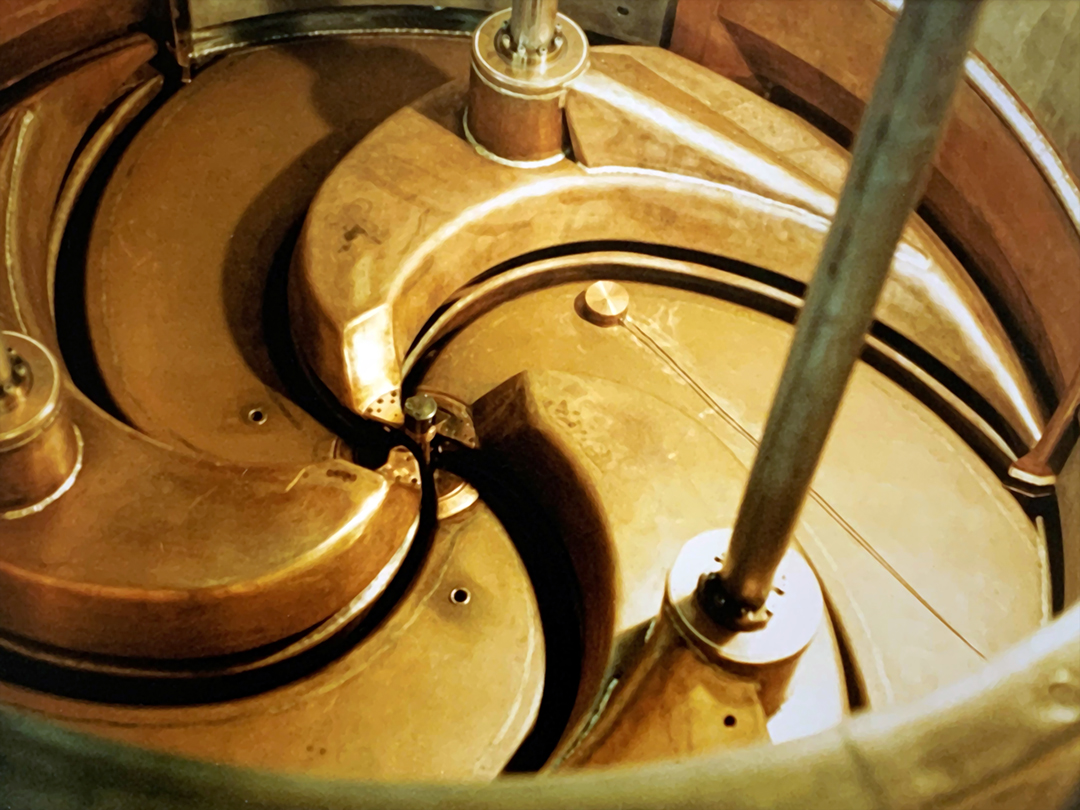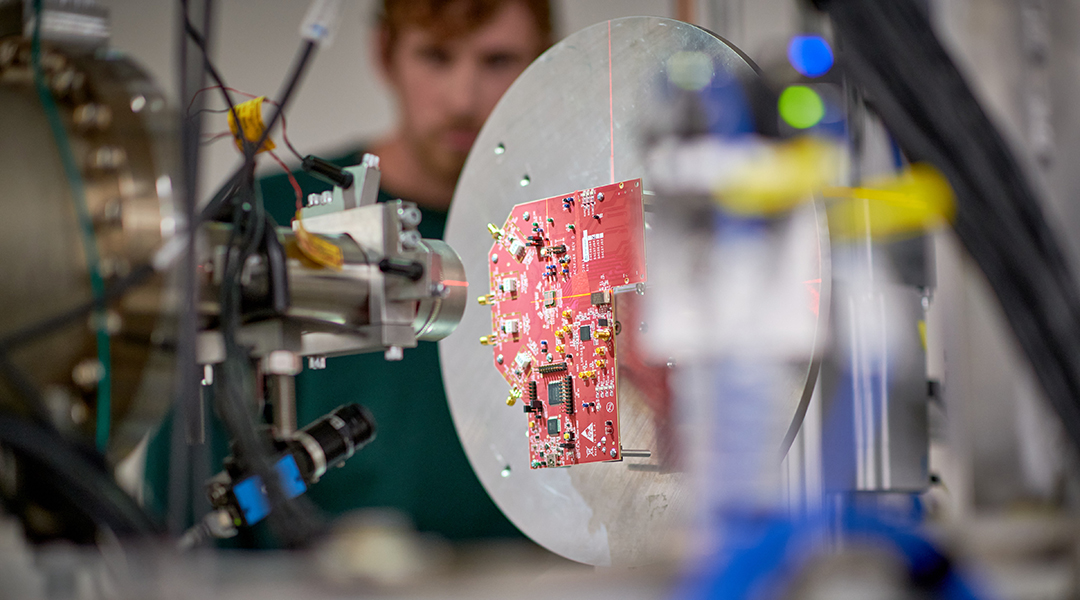Today, the Michigan State University Board of Trustees authorized construction of a high-bay addition to the west end of the Facility for Rare Isotope Beams. The addition will triple the testing capacity of the current chip-testing facility by providing two additional user vaults. The K500 Chip Testing Facility at FRIB will help meet the current national shortfall of testing capacity for advanced microelectronics, including those used for commercial spaceflight, wireless technology, and autonomous vehicles.
The 2018 National Academies report, “Testing at the Speed of Light,” outlined a critical national shortfall of testing capacity of space-bound electronic components. Supporting the national need for testing capacity, FRIB currently operates the FRIB Single Events Effects facility, which uses heavy-ion beams to measure the response of electronic components to such ions. This simulates in a few minutes the effect of cosmic rays on electronics over decades of operation.
Cosmic rays are high-energy particles that bombard Earth from all directions in space. These include heavy ions that are known to cause serious issues with the performance and longevity of electronic systems on spacecraft and satellites, as well as electronics on land-based systems such as autonomous vehicles and medical devices.

The federal government awarded $14 million to MSU to establish the K500 Chip Testing Facility, which supports the refurbishment of the world’s first superconducting cyclotron — the K500 built at MSU in the 1980s — into a heavy-ion chip testing facility.
The addition will also provide student opportunities through the MSU Space Electronics Center started by FRIB and the MSU College of Engineering. The MSU Space Electronics Center – transitioning to the MSU Space Electronics Initiative – together with the K500 Chip Testing Facility at FRIB will position MSU as a national leader in chip design and testing, and it will provide additional capacity to educate students in chip design and testing. The K500 facility at FRIB will be a magnet for attracting high-tech companies to Michigan, increasing the state’s impact to the nation’s semiconductor and aerospace infrastructure.
MSU Research Foundation Professor, John Papapolymerou, will transition from his role as chair of the Department of Electrical and Computer Engineering to the inaugural director role for the MSU Space Electronics Initiative effective July 1. The change in title from “center” to ‘initiative” addresses the breadth of the aligned efforts toward expanding MSU’s impact in this essential field.
Papapolymerou emphasized that the MSU Space Electronics Initiative promotes collaboration between industry, government, and MSU's faculty, students, and researchers, creating an unparalleled framework that the K500 Chip Testing Facility at FRIB broadens and bolsters.
"The K500 Chip Testing Facility at FRIB marks a pivotal expansion of our thriving exceptional ecosystem, dedicated to advancing radiation-hardened components and cutting-edge space electronics, and more crucially, to nurturing the next generation of talent essential for sustaining this technology's future and solidifying our nation’s leadership in the field,” said Papapolymerou. "Space electronics applications are poised to inspire a new wave of engineers and scientists, crucial to filling the anticipated 50,000 positions in semiconductor-related fields over the next five years. MSU is positioned at the forefront of molding this critical talent pipeline.”
“This is an exciting next step in expanding MSU’s impact in this critical area in service to the nation – both in providing testing capacity and cultivating a skilled workforce,” said MSU College of Engineering Dean Leo Kempel. “By partnering to foster talent and innovation, MSU, FRIB, and the College of Engineering are forging a path that ensures America's leadership in this vital field for generations to come, with Spartan engineers leading the way."

The K500 Chip Testing Facility is an addition to FRIB’s west side, between FRIB and the Chemistry, Biomedical and Physical Sciences, and Biochemistry buildings. Construction is expected to last about 14 months. As part of the construction process, MSU will take the opportunity to better integrate the addition into the MSU campus scenery using vertical greenery, and will incorporate public art into the project.
“Expanding from our current FSEE facility not only enhances our capabilities, but also underscores our commitment to supporting scientific users in their efforts toward advancing our nation's technological resilience,” said FRIB Radiation Effects Facility Manager Steve Lidia. “We are eager to serve more users and support this national need, leveraging the unique capabilities of FRIB in a most essential and impactful way.”
“We are grateful for the continued trust placed in us to operate FRIB and leverage our skilled workforce to deliver significant and synergistic activities like chip testing that serve national needs,” said FRIB Laboratory Director Thomas Glasmacher. “This is truly a testament to the enduring importance of long-term vision and consistent action toward leveraging skills and assets afforded by public investment in FRIB to address new opportunities for the betterment of society.”
Michigan State University has been advancing the common good with uncommon will for more than 165 years. One of the world's leading research universities, MSU pushes the boundaries of discovery to make a better, safer, healthier world for all while providing life-changing opportunities to a diverse and inclusive academic community through more than 400 programs of study in 17 degree-granting colleges.
Michigan State University operates the Facility for Rare Isotope Beams as a user facility for the U.S. Department of Energy Office of Science (DOE-SC) with funding from by a cooperative agreement between DOE-SC and MSU, supporting the mission of the DOE-SC Office of Nuclear Physics.
The U.S. Department of Energy Office of Science is the single largest supporter of basic research in the physical sciences in the United States and is working to address some of today’s most pressing challenges. For more information, visit energy.gov/science.
Related information